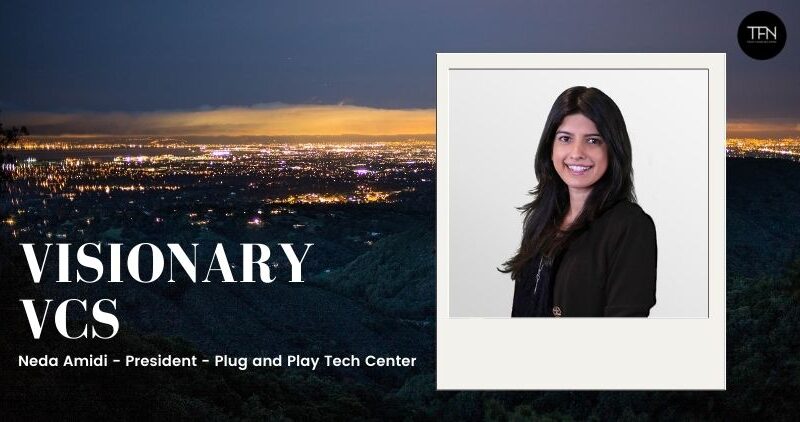While there are some well-trodden routes into venture capital, Neda Amidi, President of Plug and Play, might be one of the first VCs for whom it is a family business. However, Plug and Play’s origins — which includes working with some of the biggest, and earliest, internet names — sets it apart from the VC model that has become familiar to most startups.
Last month, TFN visited Bay Area and got a chance to visit Plug and Play Tech Center in Sunnyvale, and spoke with Amidi about how she got started and how Plug and Play’s history has resulted in it taking a different approach to VC. At the time of the interview, Amidi was also expecting and gave birth to her daughter, the same evening, so we would also like to extend our congratulatory message to her and the family.
Plug and Play started, surprisingly, with Persian rugs. It was founded by Saeed Amidi, who left Iran shortly before the revolution and set up his business. His niece explains, “that was the original family business my grandfather started. My uncles and my father when into plastic packaging and distribution. Then real estate.” And it was their property portfolio that resulted in them moving into tech funding.
“In the 80s, they were operating their plastic business out of a building in downtown Palo Alto, and they had a series of tenants like Google, PayPal, and Logitech.” It was her uncle’s business brain that recognised the opportunity for something that went beyond the typical landlord-tenant relationship. “We started angel investing in some of the tenants that were in the building; back then there weren’t really co-working spaces, and weren’t too many investors. So, we played the role of matchmaker, making the connection between these startups and corporates, and as part of the introduction, we would invest a little. And in 2006, we thought, if we could do this at a small scale, why not try it at a larger scale.”
Today, Plug and Play operates a model that’s part workplace, part-incubator, and part-investor. Helping their tenants make the connections they need for success and identifying their investments. Speaking about the building they first acquired in 2006, Amidi says, “we have over 300 startups in this building, and we’ve built an ecosystem where startups can come for access to funding and to all the things you would get in a typical, co-working space.”
Born in the US, Amidi spent part of her childhood in Iran before returning to the US for school and college, where she met her husband, before starting at Plug and Play.
Her work includes an impressive list of Plug and Play’s successes, such as Zong, a payments company that was acquired by PayPal, and Kiva, the micro-lending platform. Continuing to work within the Plug and Play portfolio, Amidi focused on the health and wellbeing startups, before taking her current role in 2020.

The Plug and Play difference
The access that Plug and Play offers to major corporate partners sets them apart from more traditional VC companies. “Startups need funding, they need space, and all the other essentials, but they also need customers,” Amidi explains.
“We introduce our startups to corporations that are interested in piloting licensing, investing, or acquiring startups. And we do it systematically, whether it’s a private deal flow session, or through our accelerator programme.” The system means a startup can benefit from the ecosystem that Plug and Play have created, and get significant funding even if Plug and Play do not choose to invest, Amidi says that they invest in about 30-40% of the companies that go through the programmes.
By leveraging corporate partners, Plug and Play can tempt startups with a dazzling array of investment opportunities. “We invest in about 200 startups a year, but we work with 500 corporations across 18 different industries,” Amidi says. And they have a physical presence in over 45 locations, including London, Germany, and Spain in Europe.
Selecting startups
Amidi says Plug and Play looks at three things when investing in startups: the team, the technology, and the traction.
Plug and Play looks for teams, rather than solo founders, and particularly looks for diverse teams, recognising the strength that it can bring. But they will also look at the technology they are using, looking for something that is unique in its space.
Perhaps most important, though, is the traction. “We see a lot of companies that move quite rapidly in a short period of time. But we also see companies that have been around for six years and the growth is just not there as well,” says Amidi. “We want to make sure that a company is growing at a healthy rate if they have revenue, that’s growing at a healthy rate as well.”
Through it all, the personal touch and character is critical. “Just being there for the founders and supporting them with, you know, connections, and just being there to listen, is definitely critical, and probably sets apart, you know, a good investor, you know, from an average investor.”
It is, perhaps, a reflection of the family nature of the Plug and Play business that relationships are seen as so important. And, just like the Plug and Play portfolio, the company family continues to grow, Amidi gave birth to her second child just a few hours after our interview.
Since 2008, Plug and Play has deployed more than $110 million in over 1,000 startups and invests $50k-250k in pre-seed, seed and Series A startups, primarily B2B. In the European tech scene, they took part in the investment rounds of blockchain wallet startup Venly and CELUS, a German deep tech company that uses AI to streamline circuit board engineering.















